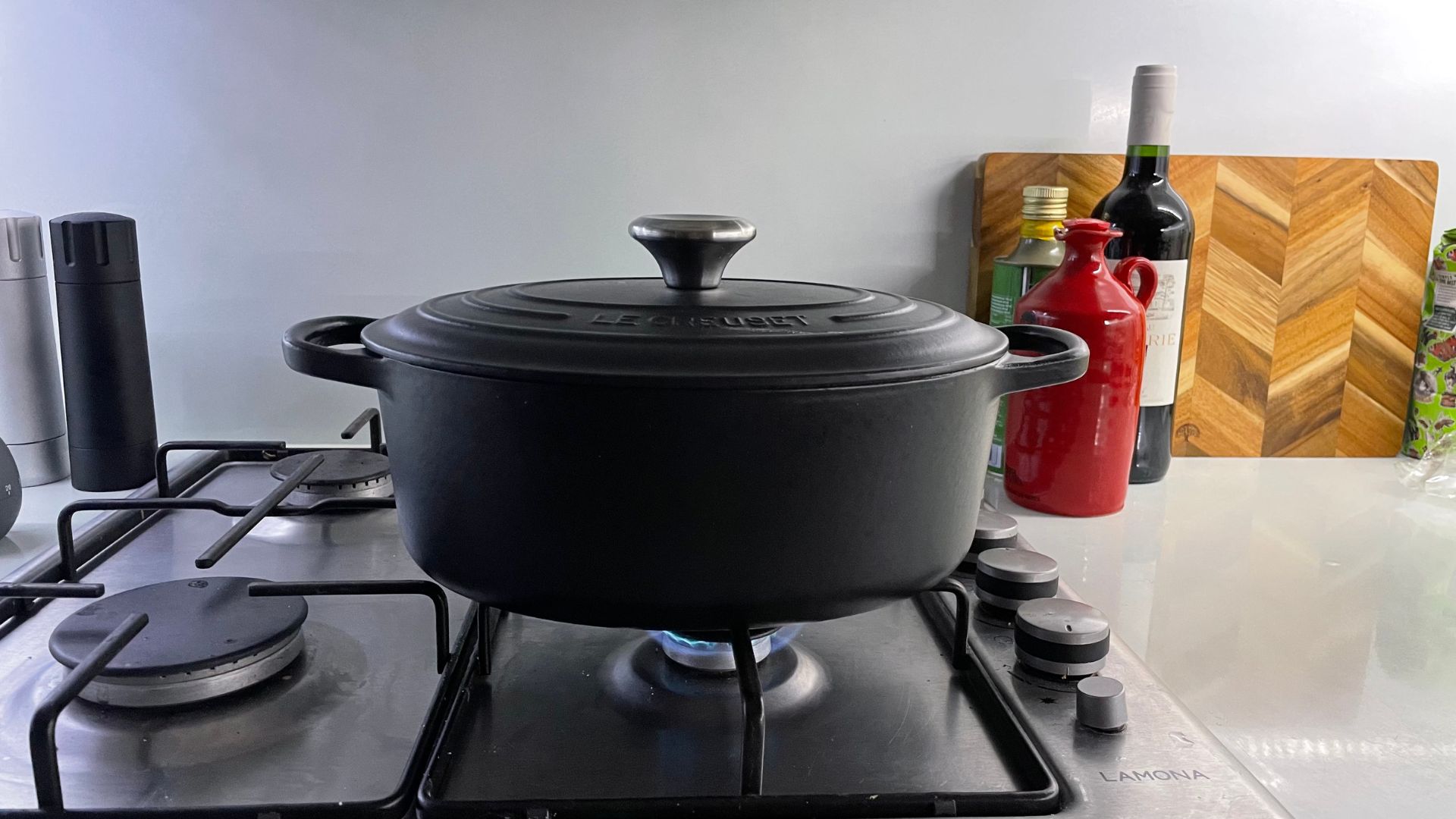
Nine years ago, I bought myself a Le Creuset Casserole Dish. I found it in TK Maxx — I wasn’t ready to face up to the full retail price yet — and took it with me through three different kitchens. That cassrole dish was round and it's served me well, but I've been seeing a lot of chatter about how useful an oval shape is. So, given that it's been nearly a decade. I thought it was time to trial one out and add to my cookware collection.
If you follow any foodies or you cook regularly in a round cast iron pot, you'll have seen that oval casserole dishes can fit longer cuts of meat and fish, a couple of chickens, and plenty of other dishes that a round casserole couldn't. So, disguised as "work" I've indulged and invested in a Le Creuset Oval Casserole Dish.
When it comes to cast iron, I don't mess around. My answer to the whole "is Le Creuset worth it?" debate is simple: if you cook a lot, yes. And, after you see some of the things I've been able to cook in my Oval Le Creuset Casserole Dish, you'll see why.
Specifications
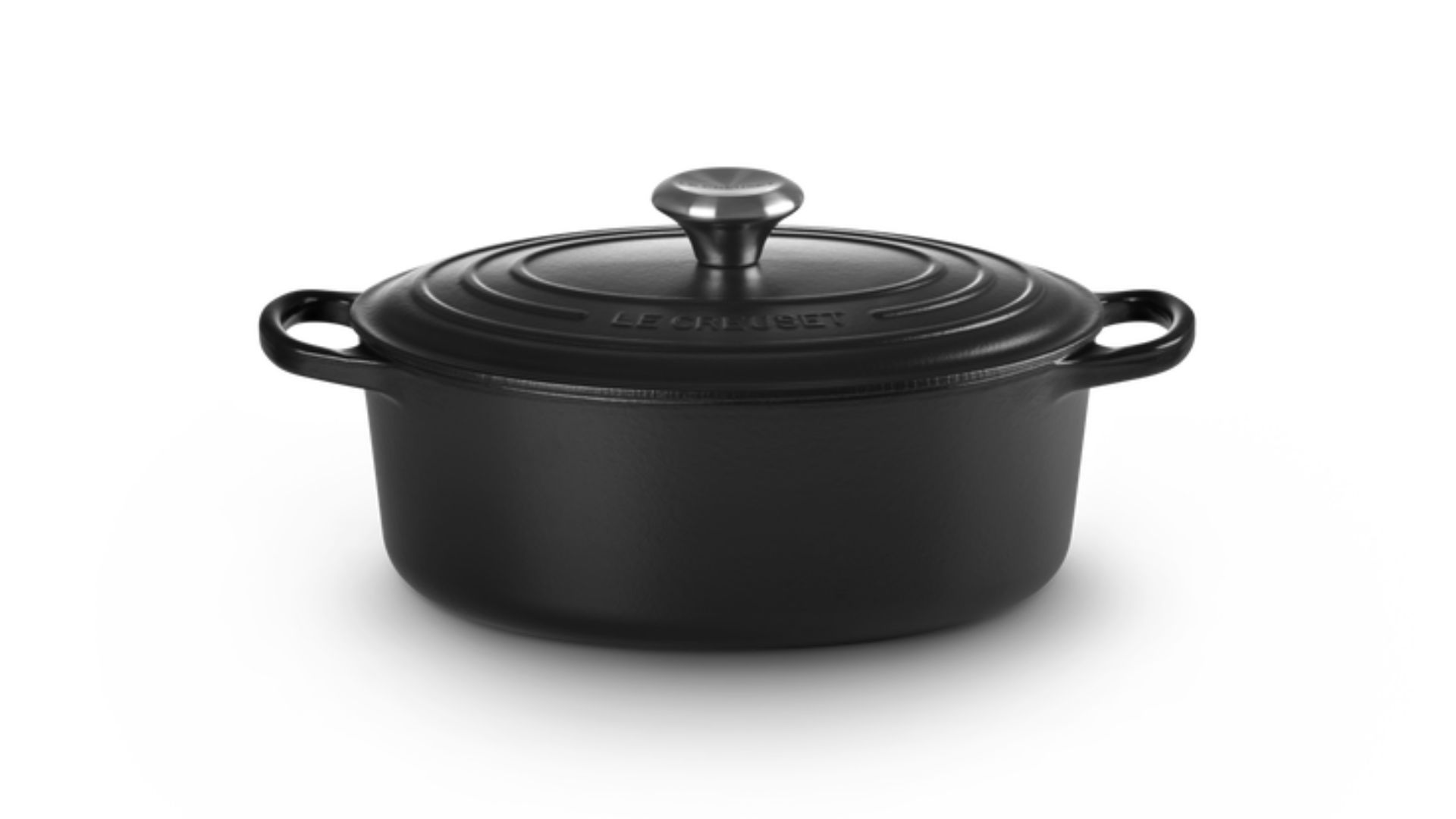
Who would it suit?
There's no escaping that Le Creuset is a luxurious purchase, but that's why it's the one that lots of keen chefs opt for.
From a technical perspective, Le Creuset's cast iron is second to none. It transfers heat incredibly evenly across the base of the pan. The lid locks in moisture, which suits everything from casseroles and slow cooks through to breads. It's a robust and versatile pot that I see as cookware-come-heirloom. Whilst the price tag looks hefty, it's worth factoring in that this comes with a lifetime warranty. I have no doubts that this will stand the test of time. I've seen plenty of Le Creuset Casserole Dishes 20 and 30 years into their lives and they're just as good as my new one.
From a style perspective, I have no doubt that the Le Creuset will take pride of place on any hob. It's available in all the classic Le Creuset colourways and looks every part the chic kitchen essential.
The only thing to note (aside from the price tag) is that they're relatively high maintenance. If you're new to cast iron cooking, you might want to get some experience cooking on cheaper options, because if you use an abrasive cleaner or metal utensil on the enamel it will scratch. It's also not dishwasher safe. More serious chefs will take the cleaning hit in favour of wide handles that you can fit an oven-gloved hand through, but beginners might not.
Unboxing
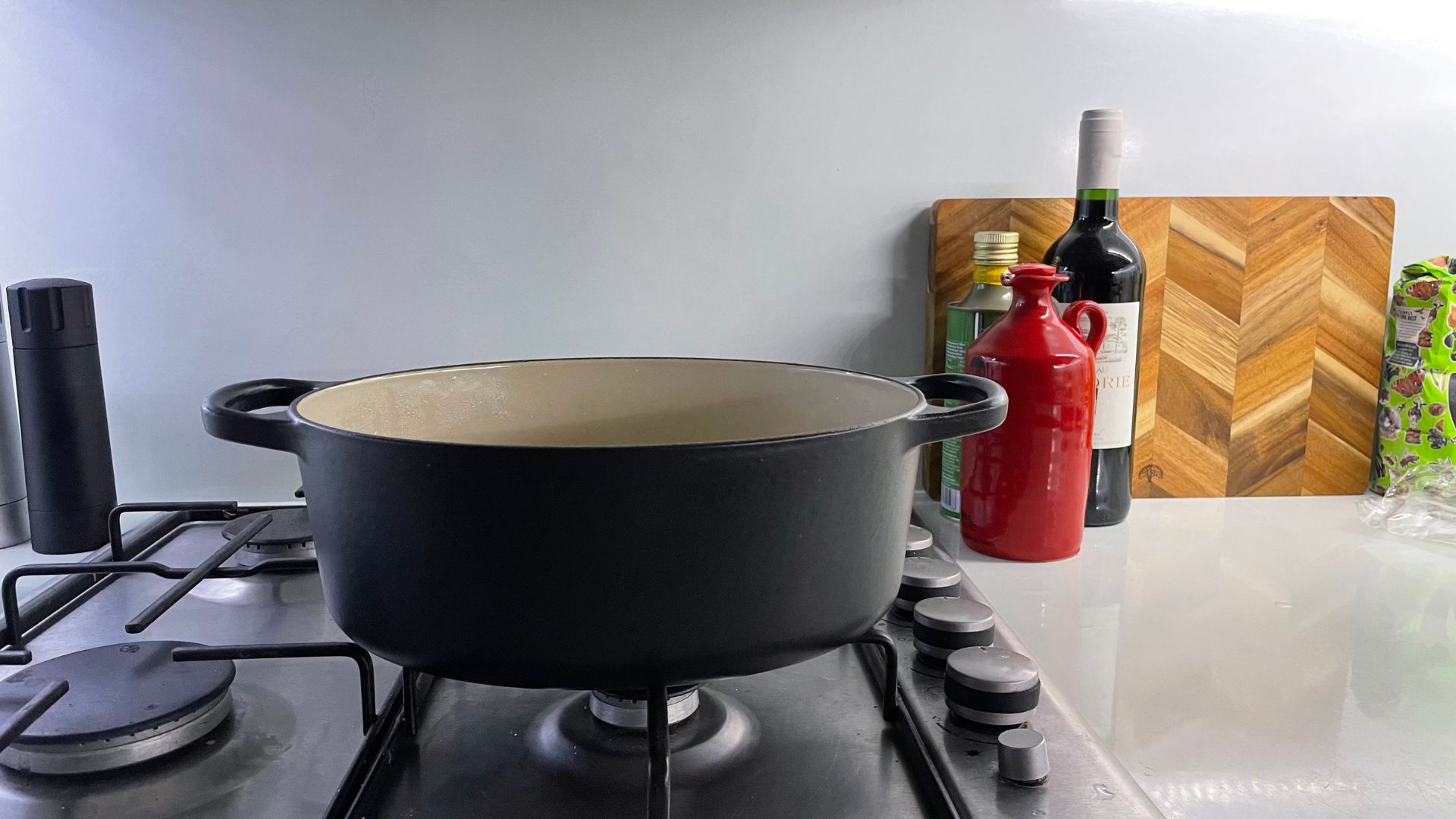
This arrives in the classic white and orange Le Creuset box. It’s packed tightly and neatly, which means that it’ll feel very dense to lift, but you won’t have to faff around with lots of extra packaging. The box and cardboard that hold the dish in place are recyclable, which makes life very easy. Since I move around a lot, I’ve kept the box and it’s been really helpful for ensuring that my Le Creuset doesn’t get scratched. It’s also robust enough to use for storage, jf you need a hand in that department.
You can see that I opted for the black colourway. It matches my other one, but the sky is the limit for bright and bold colours. The blue is a firm favourite of mine, but, quite frankly, I wouldn’t turn down the offer of any colour. Even the brightest ones look classy.
What is it like to use?
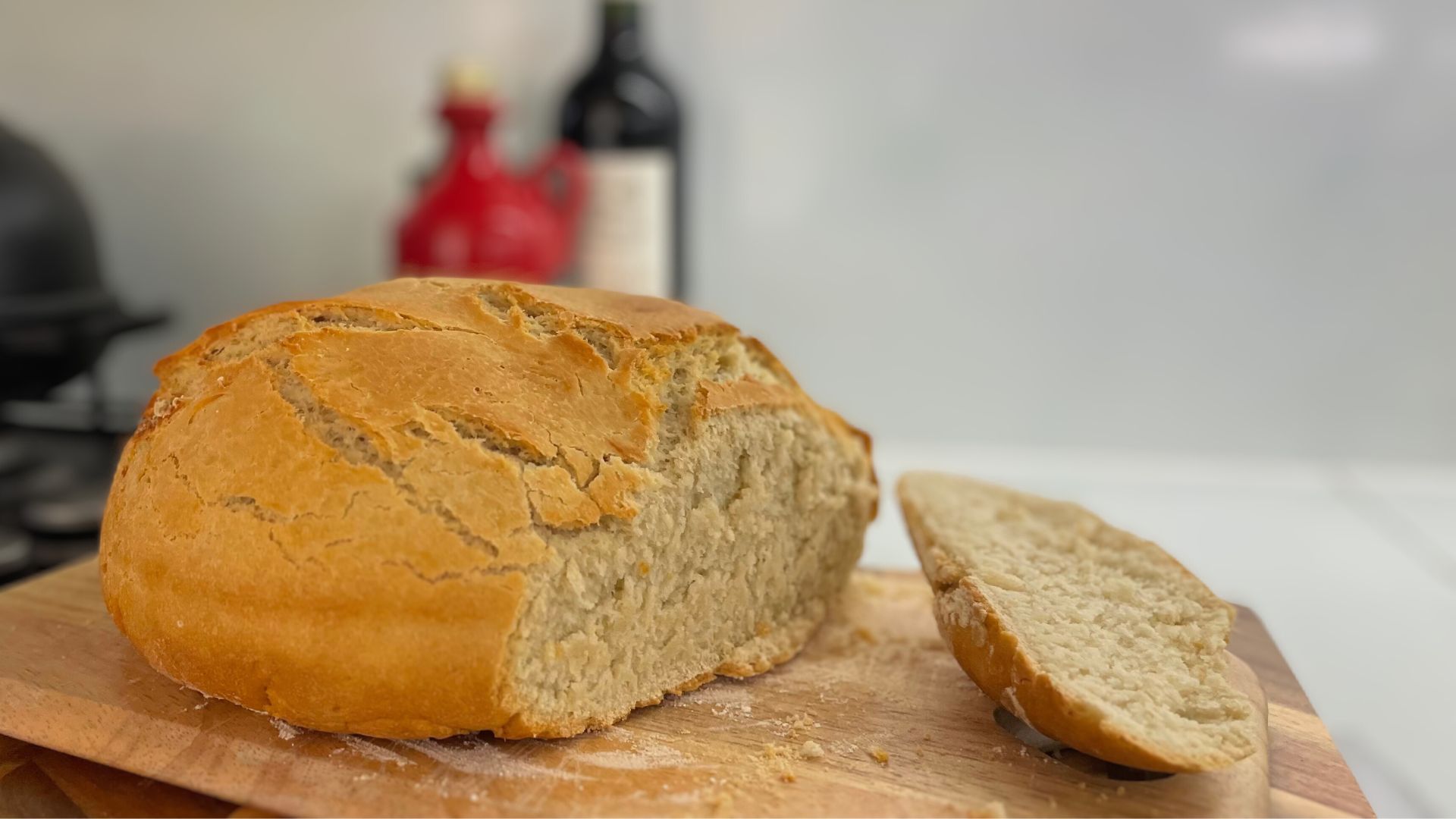
Le Creusets are compatible with all hob types, so this is very straightforward to use. I gave mine a quick rinse with some warm, soapy water and then dried it. This is generally a good idea for all pots and pans that you buy, but Le Creuset recommends it. I’ll get deeper into the details of cleaning your Le Creuset further down the article, but it’s worth noting that you can’t use abrasives on this: no wire wool, no nothing. Only let the soft part of your sponge tough it.
There are lots of subtleties to Le Creuset’s design that only reinforces why the brand has stood the test of time. The wide handles are easy to hold, even with thick oven mitts on. The lid sits perfectly in place and keeps moisture locked in really well too. Lots of little features like this culminate in a really effortless cooking experience with the Le Creuset.
Test 1: making soup
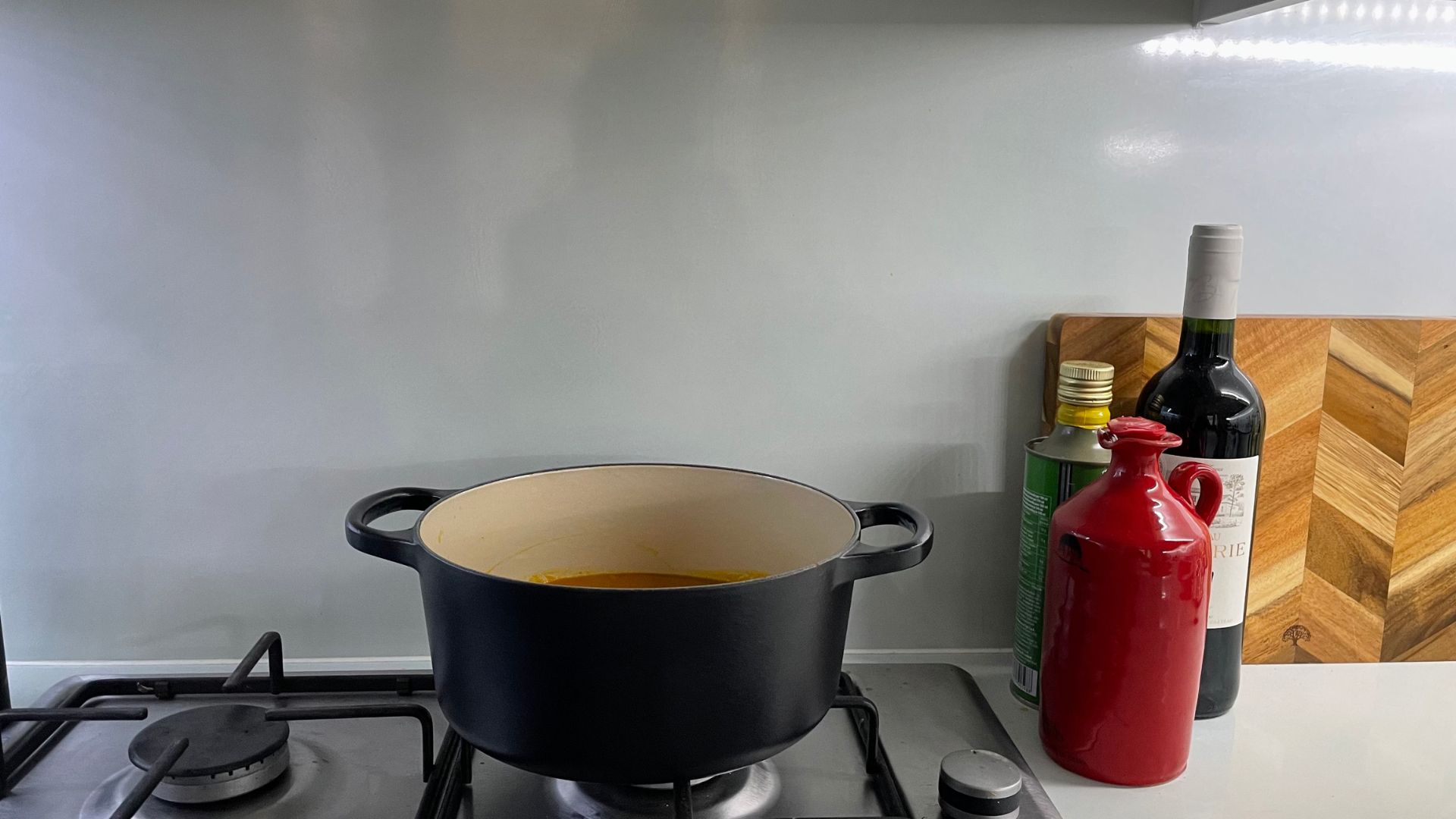
Whilst you’re probably more likely to opt for a saucepan when you’re making soup, this test is a really great way to test a range of capabilities. First, I sauté garlic and onions with some oil on the base. This is a great test of how quickly and evenly the pan heats up. After five minutes, a respectable timeframe, my oil was sizzling. The onion and garlic cooked really evenly across the base of the pan — a good sign for the heat transfer — and I was pleased with the results.
Then, I filled the casserole up with water. This was pretty heavy, because Le Creuset is weighty at the best of times. When it’s full of water, it’s close to a workout, but the wide handles served me well. I could get a good grip on the water. With the lid on, I boiled 5 litres in 15 minutes, which sounds like a long time, but it’s actually really impressive. Next, I added my peas, which boiled in 5 minutes and drained them. Tipping the heavy Le Creuset reminded me again of just how weighty this is, but it was still manageable.
In some of the other casserole dishes, I’ve gone straight in with the stick blender. However, given the fragility of the Le Creuset’s lining, I ended up blending in a different bowl. Be prepared for this, because you really won’t want to scratch the lining of your Le Creuset.
Test 2: stewing

Of course, I had to test making a casserole in this. It’s the namesake of the pan. Ideally, the lid will lock moisture in and the enamel lining will keep the food from sticking to the bottom. I started by warming the pan up. Oil was sizzling on the base after five minutes, so I added some chopped onion and garlic, sautéing them until they were soft with some gentle colour. There was some brown sticking to the bottom of the pan, but as soon as I added my wine and stock, it deglazed effortlessly. Alongside the liquids, I added my chopped root vegetables and then popped the lid on to let everything simmer for twenty minutes. When I came back to the pot, my vegetables were beginning to soften. I gave the whole mix a stir and was relieved to find that none of the dish had stuck to the enamel, so it was doing a wonderful job, although I think relatively regular stirs are essential, even in a non-stick pan.
After another ten minutes, my casserole was good to go. The vegetables were soft and tender, the lid had locked in all the delicious juices and flavours, and the pot had evidently done a very even and thorough job distributing heat.
Test 3: oven roasting
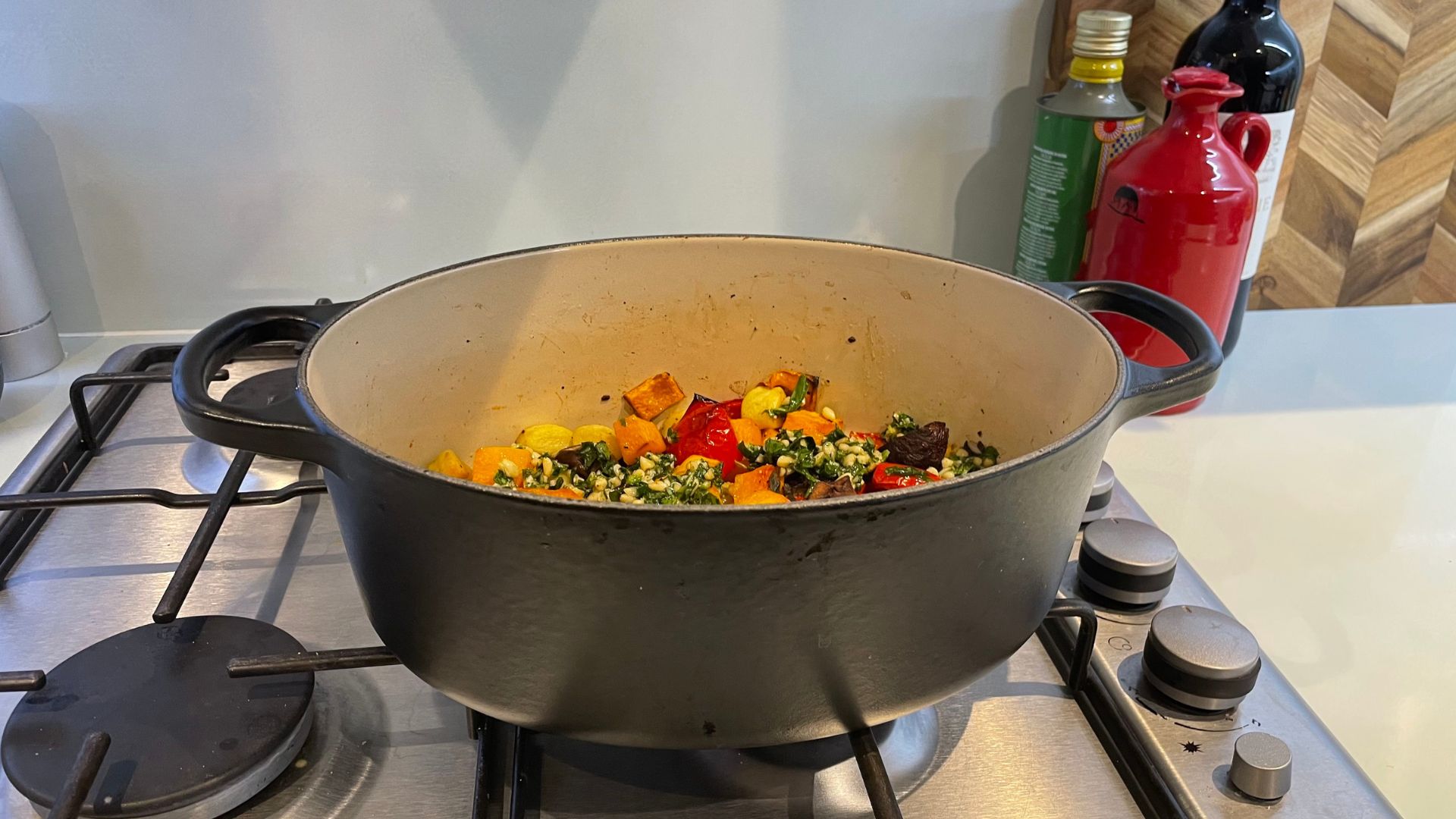
Given that the Le Creuset is oven safe, I wanted to test out some roasts and bakes. I’ve baked a dumpling stew in mine before and had wonderful success so I thought I would try something different. I chopped up some butternut squash, mushrooms, peppers, and celeriac. Then, I tossed these al with some olive oil, salt and sage, before tipping them into the base of the Le Creuset. I popped it in the oven for twenty minutes at 180 and, when I pulled the dish out, it looked great. My vegetables had browned, the gnocchi stayed puffy and crispy. The best part was that none of it had stuck to the base of the dish. I’ve had other experiences with the gnocchi burning to the base of casseroles, but not here.
Test 4: baking bread
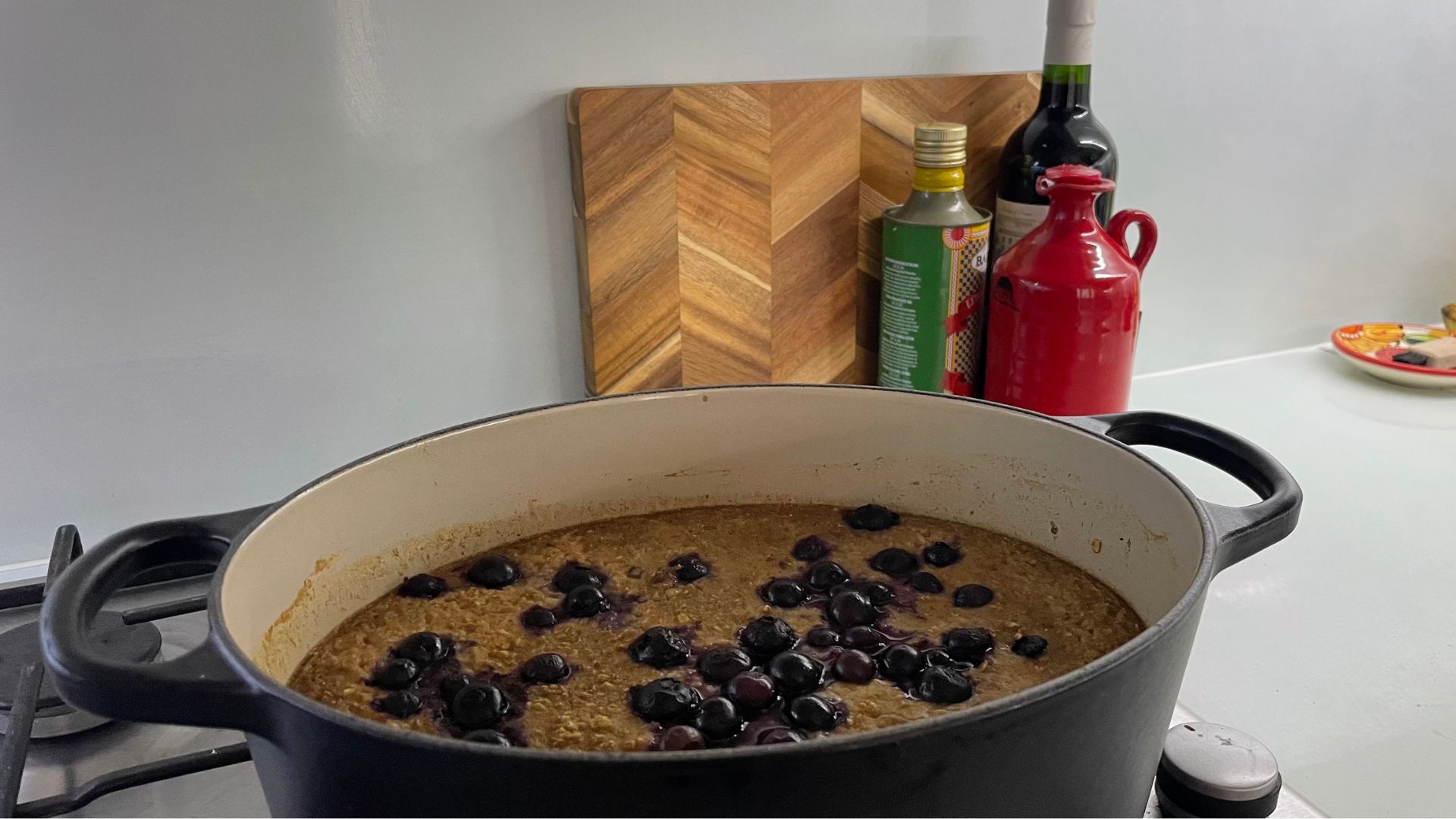
I know that I can bake bread in my Le Creuset. It’s really easy and very simple. You pop the Le Creuset in the oven whilst the oven gets up to 220. Then, place your bread dough into the base of the Le Creuset, let it cook until about ten minutes before it’s ready (that takes my family loaf about 20 minutes) and then slot the lid on for the last ten minutes. Again, it’s work that strains your wrists, but I have made some beautiful bread this way. You get a good crust, nice colour and great rise.
I knew that skill set was firmly in my Le Creuset’s repertoire, so I tried something different: baked oats. Le Creuset has a recipe for this, which I loosely followed. Essentially, you make sloppy porridge and then stir in berries. I baked mine for twenty minutes and it smelt gorgeous.
Cleaning
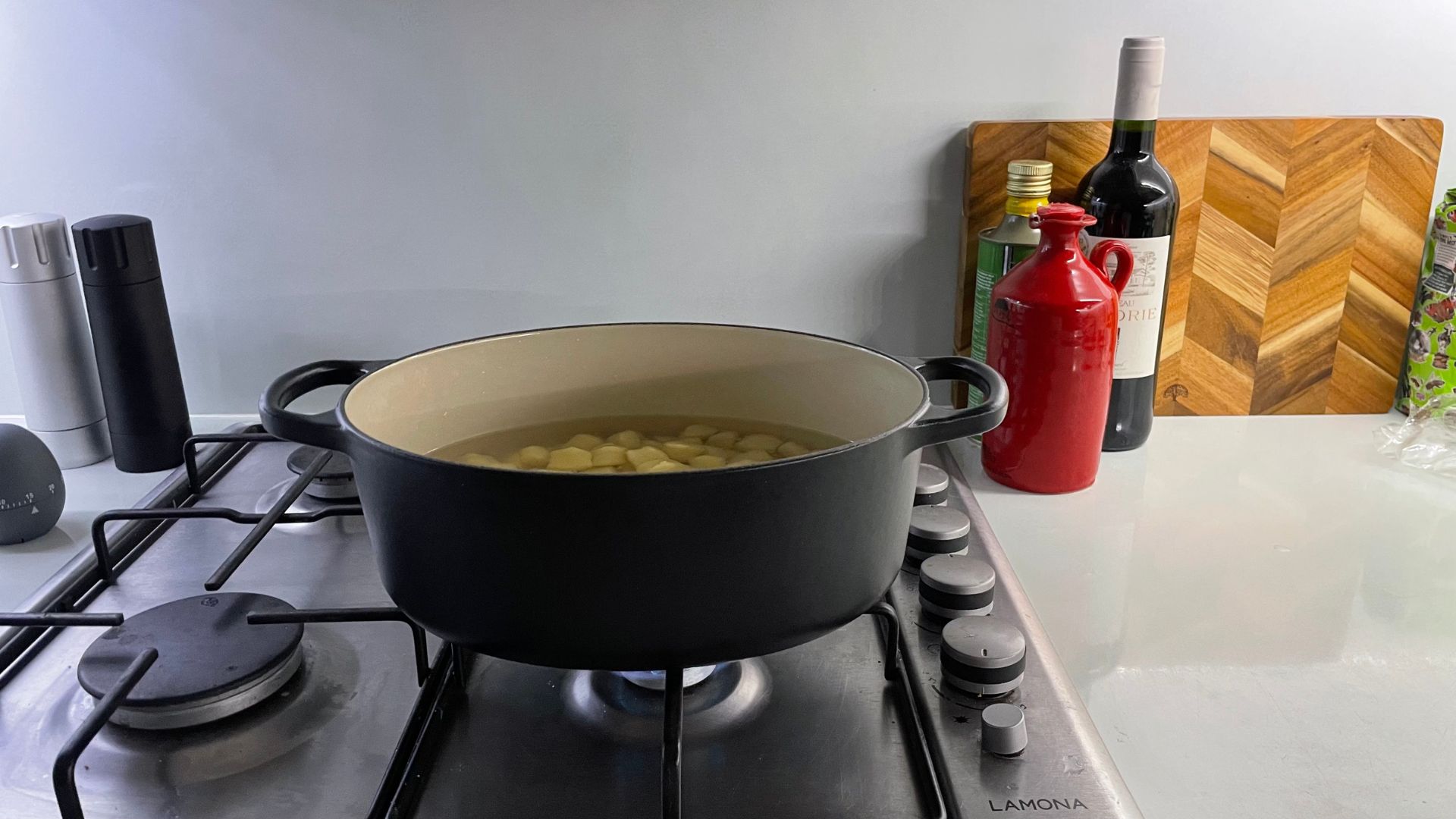
Before you do anything to clean your Le Creuset, you need to let it cool. Your cast iron will stay in much better condition if it's not subjected to sudden and extreme changes in temperature.
Once yours has cooled, if you're lucky, cleaning should be simple. No Le Creuset Casseroles are dishwasher safe, so you'll need to wash yours by hand. The plus side is that they're lined with enamel, which should work as an effective non-stick, so all you have to do is use a soft sponge and warm soapy water.
If, God forbid, you've burned the bottom of your Le Creuset, I have some tips. I once coated my Le Creuset in a thick burn, all over the base. I thought it was a lost cause, because you can't use wire wool or normal scrubbers to get that stuff up without damaging the enamel. However, reader, I did.
If you're in the unfortunate position that I was, you'll need to add warm water to your Le Creuset and let it sit for a few hours, softening the burnt food. Then, using a wooden spoon, try to scrape up as much as you can, until you've got a finer layer of burn left behind (yes, mine really was that bad). I then used a baking soda and water paste and the head of an electric toothbrush, working in circular motions, to lift up all the burn. It took time and a lot of arm muscle, but I recovered my Le Creuset and I didn't even scratch it. If I can do it, so can you.
How does it compare?
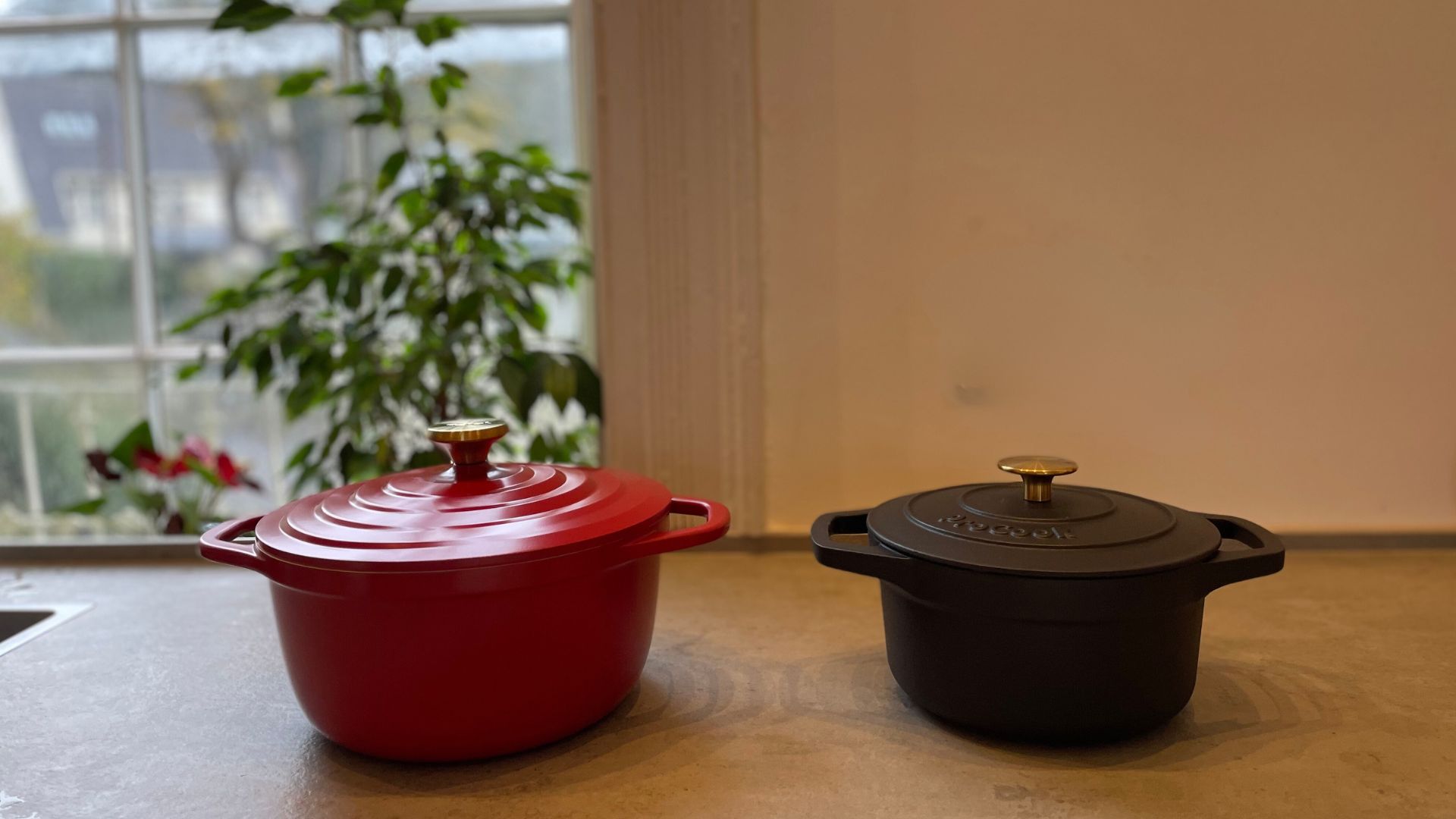
Le Creuset's Cast Iron Oval Casserole Dish is one of the most expensive on the market, so you'll want to shop around before you make the commitment.
If you're not fussed about the label, it's worth looking at ProCook's line of cast iron dishes. Whilst these don't offer the same range of colour options, they are robust and very well made. The main difference is that ProCook doesn't line theirs with the pale enamel that Le Creuset does. This makes your food much more prone to burning and it's also surprisingly hard to check up on your food's cooking when it's on a matte black backdrop. However, for half, one third, or even one quarter in some cases of the price, you can enjoy close to Le Creuset level consistency and heat transfer.
If I was shopping on a budget, I wouldn't hesitate to go for the ProCook and take the hit with the extra faff, but this is the part of my life where I allow myself some splurges. Le Creuset's wide handles, elegant design, and versatile, neat lid are worth the treat, if you're like me. I found this was 43 seconds quicker at boiling water than the ProCook Cast Iron. I'd also say that it locked in a bit more moisture and was generally a little easier to hold and move. If that's not enough, it also comes with lifetime guarantee, rather than 25 years.
Should you buy it?

If you're a keen chef and you're ready to treat yourself, there isn't anything quite like some Le Creuset luxury. You'll have this for a lifetime (and possibly a few more) with the quality and you'll reap the rewards with the neat, subtle design features that make this a cut above the rest.







